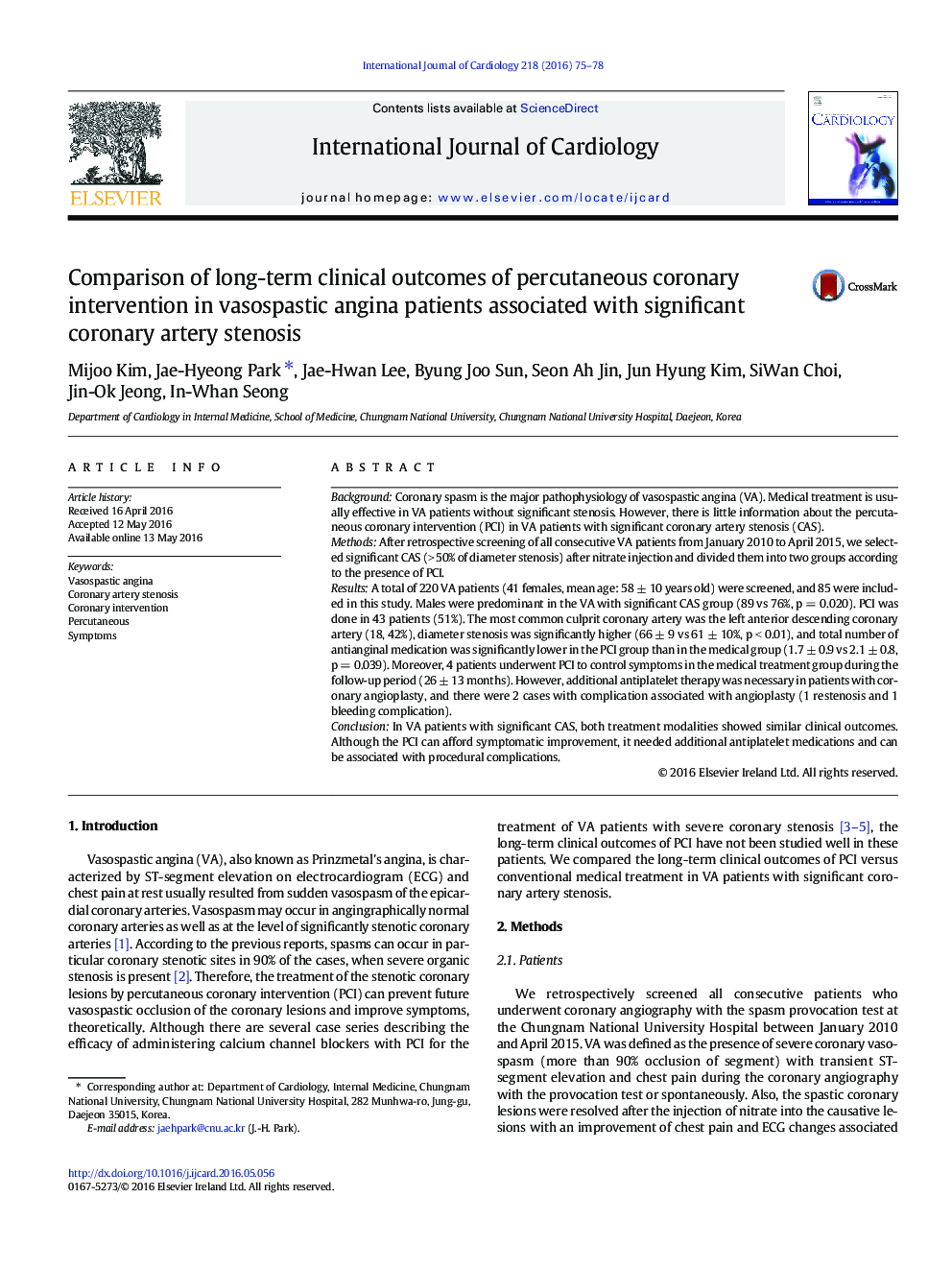| Article ID | Journal | Published Year | Pages | File Type |
|---|---|---|---|---|
| 5964117 | International Journal of Cardiology | 2016 | 4 Pages |
BackgroundCoronary spasm is the major pathophysiology of vasospastic angina (VA). Medical treatment is usually effective in VA patients without significant stenosis. However, there is little information about the percutaneous coronary intervention (PCI) in VA patients with significant coronary artery stenosis (CAS).MethodsAfter retrospective screening of all consecutive VA patients from January 2010 to April 2015, we selected significant CAS (> 50% of diameter stenosis) after nitrate injection and divided them into two groups according to the presence of PCI.ResultsA total of 220 VA patients (41 females, mean age: 58 ± 10 years old) were screened, and 85 were included in this study. Males were predominant in the VA with significant CAS group (89 vs 76%, p = 0.020). PCI was done in 43 patients (51%). The most common culprit coronary artery was the left anterior descending coronary artery (18, 42%), diameter stenosis was significantly higher (66 ± 9 vs 61 ± 10%, p < 0.01), and total number of antianginal medication was significantly lower in the PCI group than in the medical group (1.7 ± 0.9 vs 2.1 ± 0.8, p = 0.039). Moreover, 4 patients underwent PCI to control symptoms in the medical treatment group during the follow-up period (26 ± 13 months). However, additional antiplatelet therapy was necessary in patients with coronary angioplasty, and there were 2 cases with complication associated with angioplasty (1 restenosis and 1 bleeding complication).ConclusionIn VA patients with significant CAS, both treatment modalities showed similar clinical outcomes. Although the PCI can afford symptomatic improvement, it needed additional antiplatelet medications and can be associated with procedural complications.
